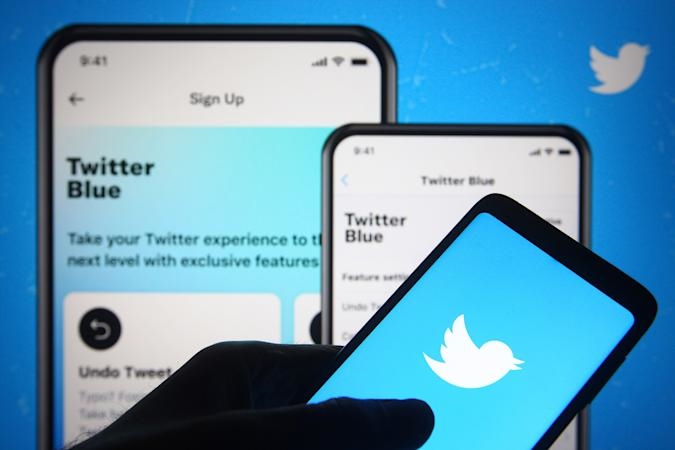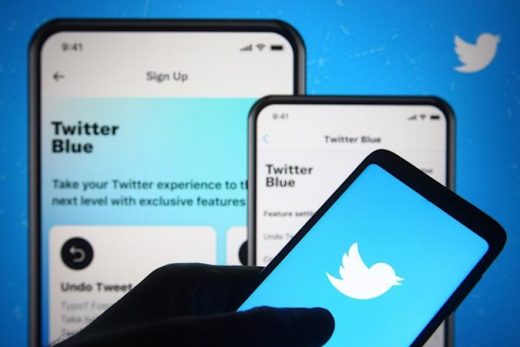Twitter starts rolling out podcasts to Blue subscribers
Is Twitter Blue worth $3 a month?
The company is catering to its most dedicated users.


Last week, Twitter’s “premium” subscription service made its debut in the United States. Twitter Blue is a $3 monthly subscription that buys subscribers access to additional features, like an undo button and ad-free news articles.
For now, Twitter Blue comes with a fairly limited set of extra features designed for the people who spend the most time on the service. According to Twitter’s Sara Beukpour, this group includes “verified longtime Twitter users” as well as “news lovers” and other “super tweeters.” In other words: the 25 percent of Twitter’s user base who send 97 percent of all tweets.
“I actually bet many of them are you,” Beykpour said during a briefing with a group of tech reporters last week. Of course I signed up immediately.
And after a little more than a week with Twitter Blue, I’m not sure it’s worth $3 a month for most people. The features are mostly useful, but it’s frustrating that not everything works the same way across Twitter’s app and website. But there are undoubtedly useful features, and I am intrigued by what might come next for “premium Twitter.” For now, though, here’s a look at what $3 buys you.
‘Undo’ tweets
Of all the features in Twitter Blue, the “undo” button has gotten the most hype. Twitter will likely never give us an actual edit button, so this is probably the closest we’ll ever get. And if you’re prone to typos or tweeting-and-then-instantly-regretting, this feature alone might be worth the subscription. I say might because the “undo” can also be incredibly confusing, and doesn’t always work as you expect.
It’s supposed to work pretty much like Gmail’s “undo send” feature. After you hit “send,” you’ll have a few seconds when you can see the tweet you just wrote, but it hasn’t actually been published. If you change your mind for whatever reason, you can hit “undo,” which takes you back to the tweet in the compose screen. Twitter gives you the ability to set how long this window is — it can range from 5 seconds to a full 60 seconds — and you can always opt to send it before the window runs out with an extra click.
But undoing a tweet doesn’t always work the same way across Twitter’s app and website. On Twitter’s app, you can use the “undo” feature for almost any type of tweet: original tweets (tweets sent from the main compose window), replies, threads, quote tweets and polls. Essentially, you can “undo” almost anything you tweet, anywhere in the app. But that’s not the case on twitter.com, where the undo function only works with original tweets and replies, but not with quote tweets or threads. Unless you exclusively tweet from your phone, this means you have to remember which tweets are editable undoable and which aren’t. A typo-ridden tweet can be undone, but an ill-advised quote tweet cannot.
There’s also the fact that it can take several steps to actually undo a tweet. In Twitter’s app, the default setting is that the first thing you see after you mash the tweet button is your tweet and an “undo” button. This gives you plenty of time to give it another read, even if you have a relatively short undo “window.” But on Twitter’s website, you can only undo by looking for a “view tweet” dialog at the bottom of the page and then navigating to the page with your tweet and the undo button.
Sometimes, “view tweet” doesn’t appear at all, and the only way to access the “undo” is to navigate to your profile and look for the pending tweet on your timeline. Not only is this a confusing extra step, but it also makes it harder to take advantage of the undo button at all. Is it still useful to have? I guess, but the unpredictability of it kind of gave me more anxiety than just not having it at all.
Reader mode and bookmark folders
The reader mode is probably the most underrated feature of Twitter Blue, and the one I’d argue would be most useful for all the site’s users, not just those willing to pay. It converts long threads into a much more readable stream of text, much like a browser’s reader view would. I hate those intrusive (and ethically dubious) third-party thread apps that “unroll” tweets into separate websites, but there’s a reason why those services are so popular: lengthy threads are difficult to read. Twitter’s service was never designed for essay-length tweet storms, and long threads are often cut off. Reader mode is a simple solution that is so effective I can’t believe it took them this long to make.
It’s even better when paired with another new feature: bookmark folders. Now, when I come across an impossibly long tweetstorm I want to come back to later, I simply add it to my “to read” folder and keep scrolling. Except, again, bookmark folders are for now only supported in Twitter’s app. Head over to twitter.com and all your bookmarks are still a mess.
Ad-free news and ‘top articles’
My favorite Twitter Blue feature — and a large part of the reason why I will likely continue handing over $3 each month for it — is the “top articles” feature. The feature shows you a list of all the most-shared news articles by people in your Twitter network over the last 24 hours. If that sounds at all familiar, it’s because the feature is Twitter’s nod to Nuzzel, a once independent news app that also created feeds of articles based on what was being shared by people you follow on Twitter. But the original app was shut down when Twitter acquired Scroll, the news startup that had previously bought Nuzzel.
And while “Top Articles” doesn’t have all the functionality Nuzzel once did, it’s enough to scratch the itch for former fans of the app (a group that seems to be almost entirely made up of journalists as far as I can tell). But even if you never used Nuzzel, Top Articles is useful. It gives you a quick digest of what the people you follow are reading and tweeting about. Or, you know, you can just use it to figure out who is the main character of the day.
Twitter’s acquisition of Scroll also powers another significant part of Twitter Blue: ad-free news articles. Scroll (and now Twitter) formed partnerships with hundreds of news outlets in order to offer ad-free browsing in exchange for a portion of users’ subscription fees. Now, Twitter lets subscribers view how much their own browsing has directed to those publishers. It’s an intriguing concept, and one that won Scroll a lot of praise before it was bought by Twitter.
It’s also the aspect of Twitter Blue I’m most curious to watch. As it stands now, it can feel a little disjointed. While stripping out ads is nice, it doesn’t include access to paywalled content, so it can be jarring to see an “ad-free with Twitter Blue” banner only to hit a paywall. However, Twitter has hinted that it may one day pursue more ways to access paywalled content — and a message in the app says paywall access isn’t included “right now” — so there’s good reason to hope that may one day change.
Early access to new features and customization
Twitter has gotten much more public with the features it experiments with in recent years. The company at one point had a separate beta version of the app it used to try out new tweaks. That app is no longer available, but the “labs” feature of Twitter Blue feels in some ways like its successor. The company plans to make some experimental features available to Twitter Blue subscribers first, before deciding whether they should become full-fledged features available to more people.
For now, there are only two features that fall into this bucket: the ability to pin specific chats to the top of your DM inbox, and the ability to upload videos of up to 10 minutes (these longer videos are not entirely new, but accounts had to be approved by Twitter in order to have access to the feature). I appreciate having the option to do both, though I haven’t used either feature and I suspect most others won’t either.
Finally, Twitter Blue also gives you the ability to make small tweaks to the look and feel of the Twitter app. For example, you can change the app icon or set a new color theme (the “theme” only changes small elements like the color of the tweet composer and the dot that appears when you have a new notification). You can also opt to rearrange the shortcuts in the bottom of the app’s navigation bar, which is kind of cool (especially if you want to, say, banish the Spaces Tab). But, again, these are small details that I can’t imagine most people bothering to change.
Is it worth it?
Whether or not you think all that is worth three bucks a month largely depends on how much you use Twitter (and how willing you are to pay for apps). While I don’t think it makes sense for most people, I think it’s pretty compelling for anyone who depends on Twitter for their job or otherwise falls into that extra-dedicated “super tweeter” category.
And while Twitter hasn’t offered any details around how many subscribers have signed up, the app has made about $180,000 since it first started offering Twitter Blue this summer, according to data provided by analytics firm Sensor Tower. That’s not much money for Twitter, but it does suggest there is a not-totally-insignificant number of people willing to try it out (and the service is still only available in four countries).
At a broader level, Twitter Blue raises important questions about how the company will prioritize new features. While the company has maintained that there will always be a free version of Twitter, it’s not difficult to imagine that the most exciting and useful updates could end up being locked behind a subscription. Twitter spent much of the last decade not really creating any meaningful new features at all, so it still stings a little to see the company add the kinds of features longtime users have long hoped for, only to restrict them to those willing to pay.
(32)


